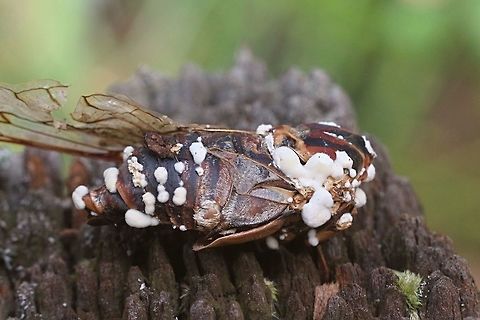
Appearance
In culture, ''B. bassiana'' grows as a white mould. On most common cultural media, it produces many dry, powdery conidia in distinctive white spore balls. Each spore ball is composed of a cluster of conidiogenous cells. The conidiogenous cells of ''B. bassiana'' are short and ovoid, and terminate in a narrow apical extension called a rachis. The rachis elongates after each conidium is produced, resulting in a long zig-zag extension. The conidia are single-celled, haploid, and hydrophobic.
Naming
The species is named after the Italian entomologist Agostino Bassi, who discovered it in 1815 as the cause of the muscardine disease which then led to carriers transmitting it by airborne means. It was formerly also known as ''Tritirachium shiotae''. The name ''B. bassiana'' has long been used to describe a species complex of morphologically similar and closely related isolates. Rehner and Buckley {alpha} sequences: evidence for cryptic diversification and links to Cordyceps teleomorphs |volume=97 |pages=84–98 |pmid=16389960 |issue=1 |doi=10.3852/mycologia.97.1.84|url=https://naldc.nal.usda.gov/naldc/download.xhtml?id=37383&content=PDF }} have shown that ''B. bassiana'' consists of many distinct lineages that should be recognized as distinct phylogenetic species and the genus ''Beauveria'' was redescribed with a proposed type for ''B. bassiana'' in 2011. In light of this work and the known existence of cryptic species, it is important to characterise isolates used to develop biological insecticides.References:
Some text fragments are auto parsed from Wikipedia.